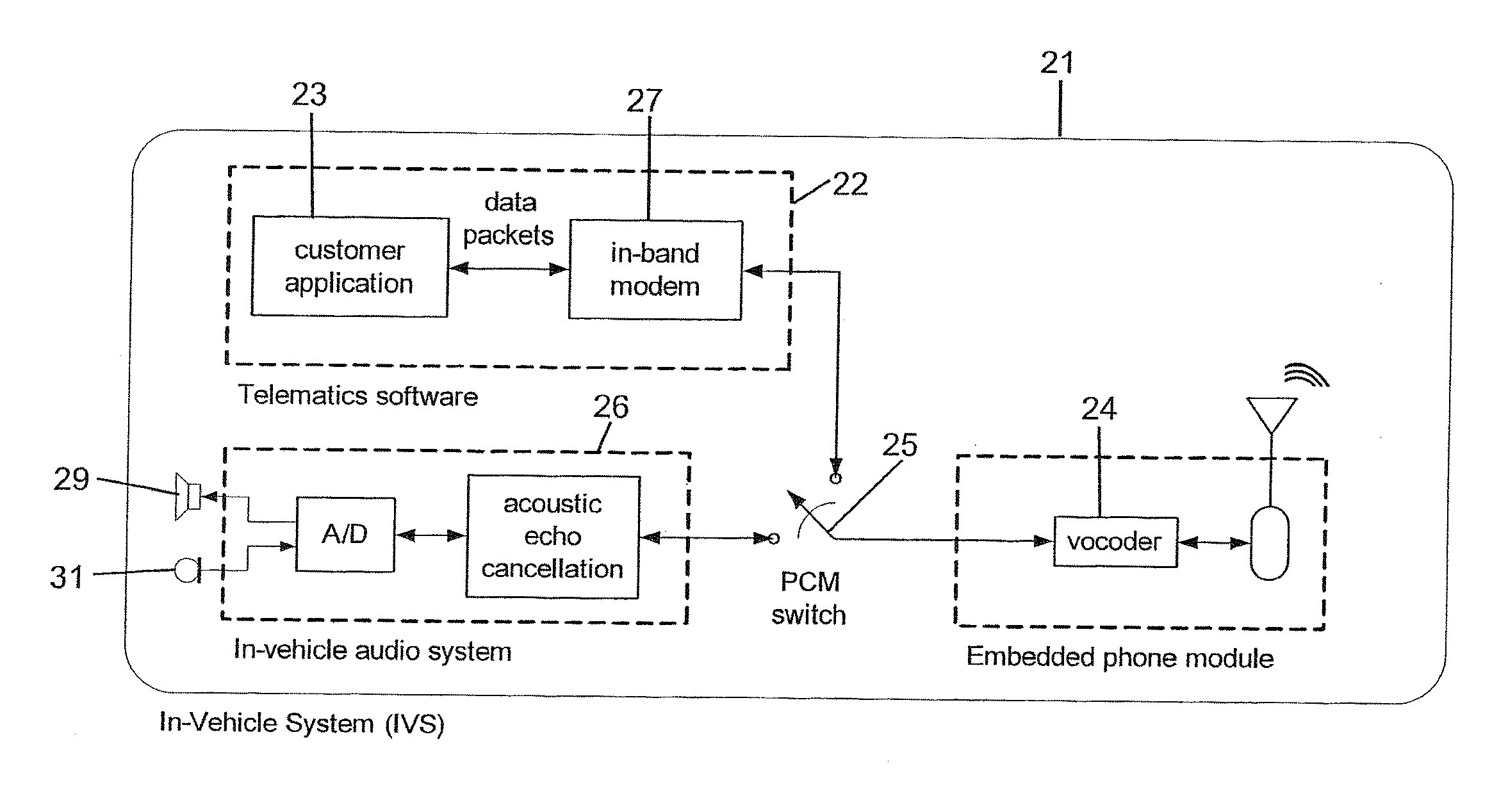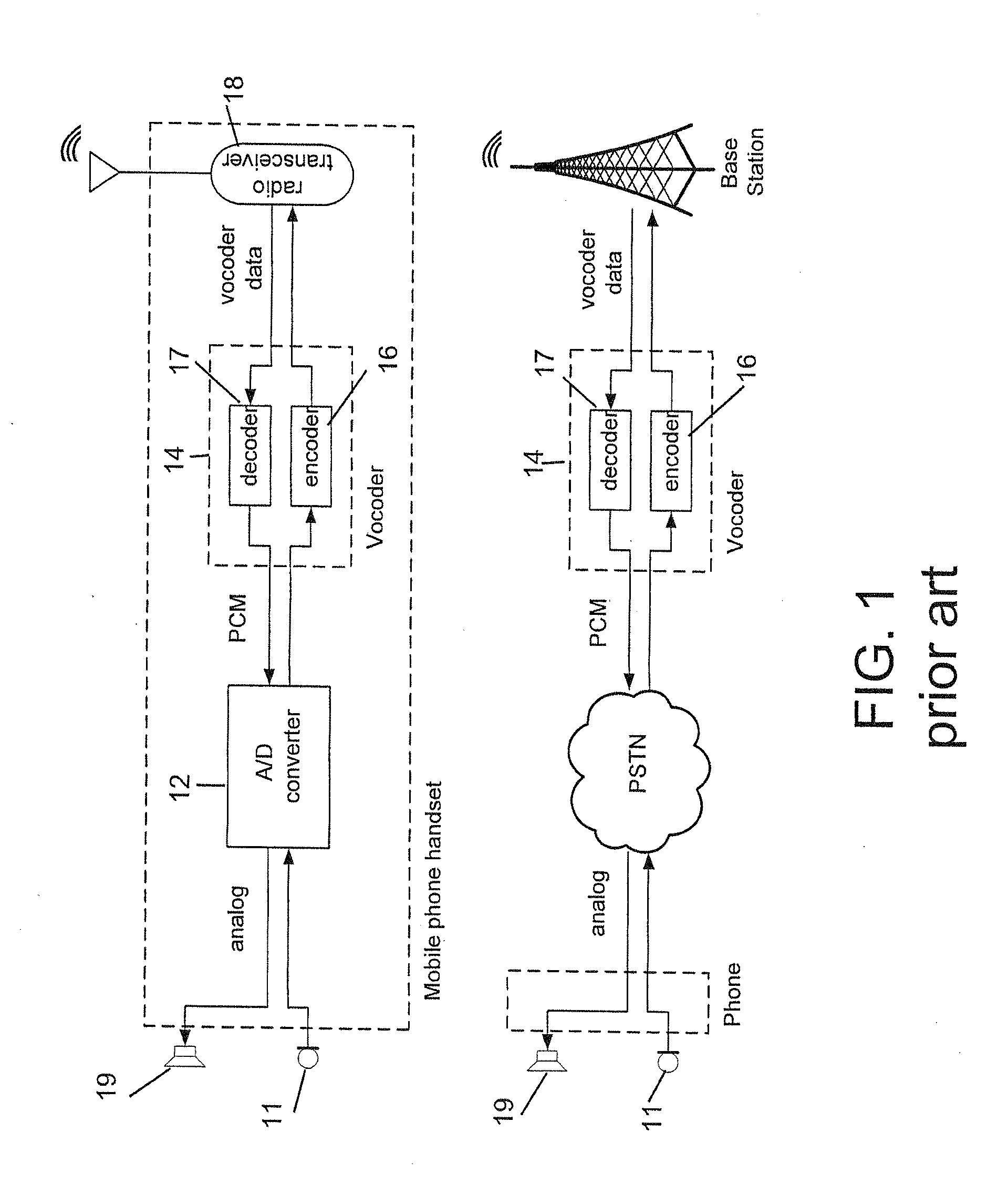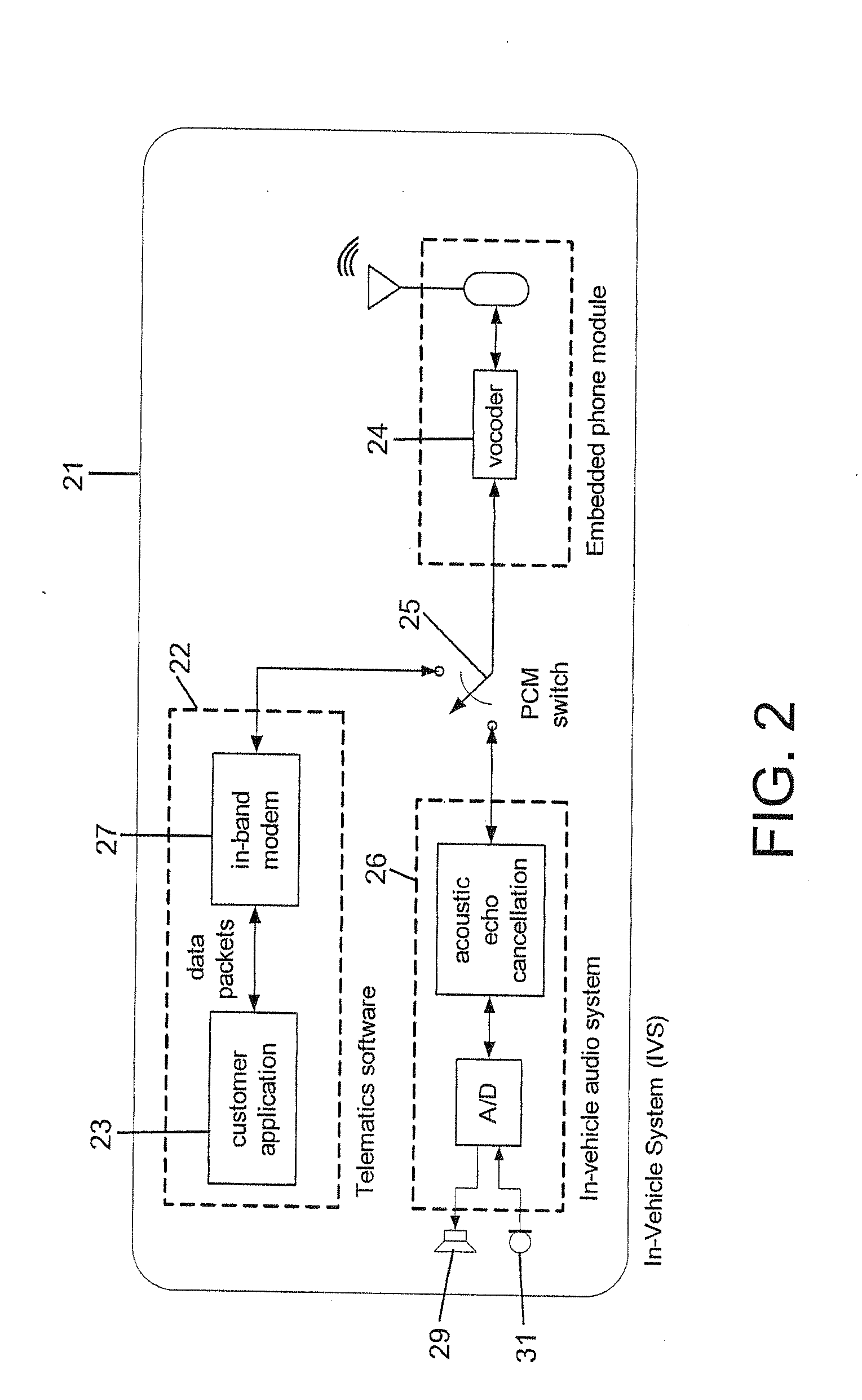In-vehicle system (IVS) control of emergency data communications
a technology of emergency data communication and vehicle system, which is applied in the field of vehicle system, can solve the problems of difficult if not impossible to determine the location of the caller, distinct technical challenges of wireless telecommunications, cell phones,
- Summary
- Abstract
- Description
- Claims
- Application Information
AI Technical Summary
Benefits of technology
Problems solved by technology
Method used
Image
Examples
Embodiment Construction
[0017]FIG. 1 is a simplified block diagram illustrating the typical speech path for a wireless voice call; i.e., a telephone call over the wireless telecommunications network. The upper diagram shows a simplified mobile phone handset. Analog voice signals from a microphone are digitized by an A / D converter, and then fed to a vocoder encoding algorithm (at 8000 samples / sec). The encoder produces packets of compressed data (typically one packet per 20-ms frame of audio) and feeds this data stream to a radio transceiver. On the other side (lower diagram), a radio receiver passes the packets to the decoding algorithm, which then reconstructs (imperfectly) the original voice signal as a PCM stream. This PCM stream is eventually converted back into an analog voltage which is then applied to a speaker.
[0018]Using this type of system, modest amounts of data (here we mean user data, not vocoder speech data) can be transmitted “in-band” through careful selection of frequencies, timing, and th...
PUM
 Login to View More
Login to View More Abstract
Description
Claims
Application Information
 Login to View More
Login to View More - R&D
- Intellectual Property
- Life Sciences
- Materials
- Tech Scout
- Unparalleled Data Quality
- Higher Quality Content
- 60% Fewer Hallucinations
Browse by: Latest US Patents, China's latest patents, Technical Efficacy Thesaurus, Application Domain, Technology Topic, Popular Technical Reports.
© 2025 PatSnap. All rights reserved.Legal|Privacy policy|Modern Slavery Act Transparency Statement|Sitemap|About US| Contact US: help@patsnap.com



